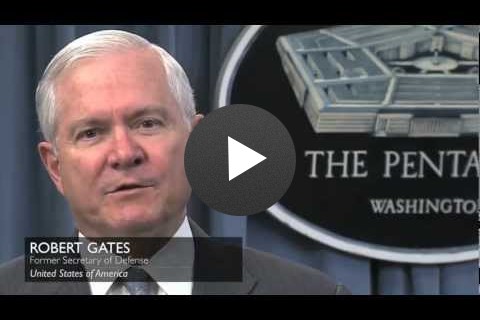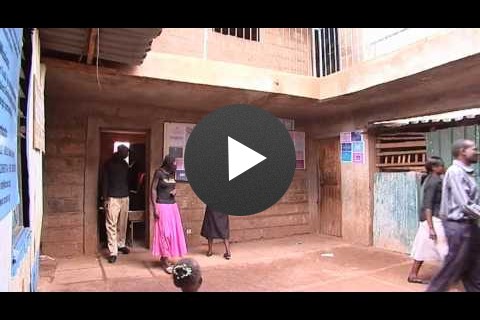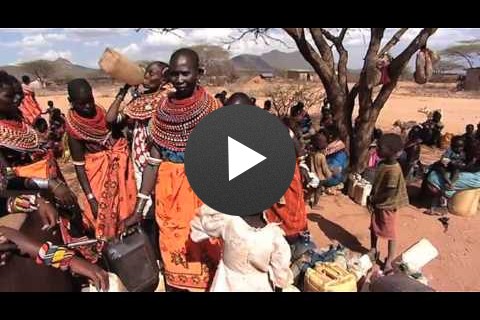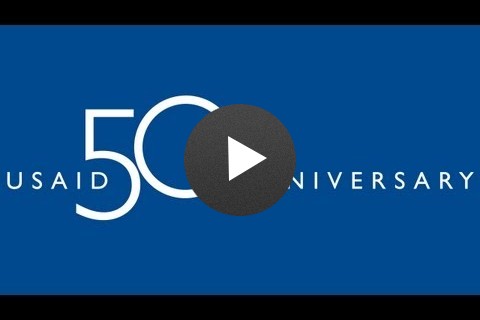The Electricity 101 video for Power Africa explains key pillars of the power sector in the context of sub-Saharan Africa, helping viewers understand the basics and challenges of the electricity sector in developing countries.
Electricity 101
00:06:57
Video Transcript
Have you ever considered how electricity comes into your lamp when you switch it on to read at night? The electricity grid, which delivers power to everywhere it is used, is a sophisticated system supporting a network of wires to deliver a stream of electrons to your lamp.
But why is the power sector so complicated?
• Electricity gets delivered from producers to users through the national power grid, which moves electricity often over long distances from where it is created to your light bulb.
• A variety of resources are used to produce electricity.
• Government regulators are often heavily involved in defining its market.
Understanding electricity begins by understanding the power grid.
The power grid makes sure that the amount of power demanded by consumers (or end users) matches the amount of power that is supplied by power plants or other production facilities.
Power grids are complex because:
• Electricity has to be transmitted over long distances
• Electricity can’t be easily stored, and
• Power systems are very expensive to build and those costs have to be recouped.
So how is the power grid laid out and what’s included in this complicated web?
A typical power grid has four main parts:
• Generation Facilities – the places where power is created;
• Transmission Systems – the high-voltage superhighway over which power is transported;
• Distribution Systems – the lower voltage side streets where power is delivered to your doorstep; and
• End users – the different types of customers that consume power at the end of the chain where the electricity meter is located.
Let’s start at the beginning: how power is created or generated.
Generation facilities can generally be separated into two categories, “base load” or “peak load”:
• Base load facilities run almost constantly. These facilities use fossil fuels, nuclear energy, or hydropower. Some developing countries even use high cost oil or diesel to produce base load power.
• Peak load facilities produce power that is used when the load on the grid exceeds base load, i.e., when demand is high. This type of power is generally more expensive.
• Renewables like solar or wind are intermittently available for base or peak loads.
Once power is generated, it moves through the transmission system. The transmission system serves as a superhighway of the power sector, delivering high volumes of electricity over long distances.
This part of the power grid:
• is made up of transmission towers;
• and wires that transfer electricity over long distances,
• ending at substations that increase or decrease power voltage as it moves through the wires.
Once power comes from the generation source through the transmission system, it exits the electricity superhighway and moves into the distribution system. Think of the distribution system as the smaller side streets which deliver power to end users.
Now that you know the basics of the electricity grid, there are two other important concepts to discuss -- renewable energy technologies and tariffs.
In today’s electricity market, renewable energy technologies play an increasingly important role in power generation, alongside traditional fuels.
There are five commonly used renewable energy sources:
• Solar (converting sunlight into power);
• Wind (converting wind into power);
• Hydro (converting moving water into power, either at a dam or along a running river);
• Geothermal (which uses heat and steam from the earth's core for power); and
• Biomass (which uses agricultural and forest products or animal waste as fuel for power)
These renewable energy sources have the positive benefit of a smaller environmental impact, but also a few limitations
• Wind and solar are considered intermittent sources, meaning they can only produce electricity when natural conditions permit. This means power from these sources is non-dispatchable – or that it is only available to the grid operator at certain times and not whenever it may be needed.
• With the exception of hydro and geothermal, renewable generation fueled by these sources often cannot be built large enough to produce the same volume of electricity at a cost competitive with traditional fossil fuel sources.
As a result, sometimes these renewable energy sources are used in rural, off-the-grid applications or to supply a small number of local customers. Additionally, as the cost of solar continues to drop, it becomes increasingly competitive with traditional fossil fuel sources.
Next, let’s talk about the money.
Tariffs – or the price of electricity – play an important role in making the power sector function.
Building the infrastructure and keeping a power grid running requires many inputs which are big investments. Establishing a price for electricity that will allow developers to recoup these investments while providing power at a reasonable cost is one of the most important issues in the electricity sector.
So how does this all relate to developing countries and their particular challenges?
In sub-Saharan Africa, the power grid faces numerous challenges contributing to inefficiency, limited scope, and constraints to consumers.
This is because:
• The continent’s geography requires power to travel over very long distances;
• Rapid population and industry growth means the supply of electricity often can’t keep pace with the increasing demand of end users;
• Many consumers have low incomes, making it difficult to pay for electricity or afford modern energy services;
• Many utilities that are government owned lack the funds needed for proper investment and maintenance;
• Privately owned power companies also struggle to invest because of government-mandated low electricity costs, making returns unattractive and recovering costs difficult.
Because power grids in sub-Saharan Africa are so constrained, more than two-thirds of the continent, or 600 million people do not have access to electricity. These consumers often rely on kerosene for lighting and diesel for mechanical power, which are expensive and harmful for the environment.
This limited electricity access across sub-Saharan Africa makes it extremely difficult to:
• Run a business;
• Power critical medical devices and facilities;
• Keep perishable food cold;
• Study after dark.
To unleash economic growth and alleviate poverty, African countries need the support of partners to power their economic engines.
The Power Africa Initiative aims to do just that. By working with African governments, private investors and other development partners, Power Africa aspires to facilitate the addition of more than 30,000 megawatts of electricity generation capacity and 60 million new connections, assisting the continent to meet critical energy needs for the future.
Сентябрь 16, 2011















Comment
Make a general inquiry or suggest an improvement.